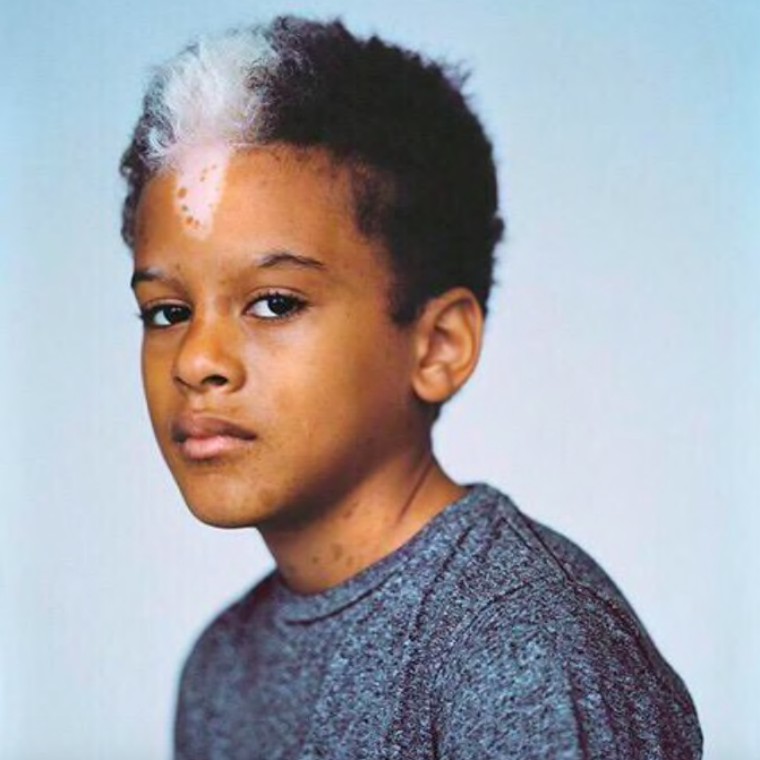Table Of Content

Your skin gets its color from pigment-producing cells called melanocytes. Nevi (moles) form when these cells group together in one place, rather than evenly distributed throughout your skin. In the case of congenital nevi, this process happens during the fetal stage. Most birthmarks are harmless and many fade completely over time. Some, such as port-wine stains, are permanent and may even occur on the face.
Vascular Birthmarks
You may notice the birthmark changes color, becoming slightly yellow or orange. When it develops on the scalp of a newborn, this birthmark often looks like a slightly raised, hairless (or nearly hairless) patch. Your baby’s hair will grow around it, as shown in the picture above. Port-wine stains may start out as pink or red and turn dark red or purple. They don’t fade over time and may become darker if left untreated.
Hair Birthmarks 1
Many hemangiomas fade away completely by the time a child reaches adolescence. These marks may be referred to as cherry or strawberry hemangiomas. Hemangiomas may start out small in size and flat in shape.
Types of Hairy Birthmarks
Sometimes extra blood vessels will clump together and create a visible cluster. Vascular birthmarks occur in around 40 percent of newborns. A port-wine stain is a permanent birthmark present from birth. Color ranges from pink or light brown to deep maroon. Most often, a port-wine stain appears on the face, but it can affect other areas.
Open sores sometimes form with hemangiomas and can get infected. Pigmented birthmarks rarely cause other problems, but moles should be checked throughout life for changes in size, color, or texture. Pigmented nevi (moles) are growths on the skin that usually are flesh-colored, brown or black.
Classification of congenital melanocytic naevi
Your baby's provider should already have checked out any birthmarks on their face and body during regular well-baby visits. Your provider will let you know if a mark is anything for you to worry about. If the birthmark is very visible or it bothers your child, see a pediatric dermatologist for advice. They can perform a laser procedure to shrink the blood vessels. Melanoma can also develop within a small congenital melanocytic naevus. This is rare and likely to occur on the periphery of the naevus during adult life.
Baby born with rare birthmark which means he has a white streak of hair - Metro.co.uk
Baby born with rare birthmark which means he has a white streak of hair.
Posted: Fri, 16 Mar 2018 07:00:00 GMT [source]
They can occur anywhere on your face, scalp, or body and can vary in color, size, appearance, and shape. Some birthmarks can be flesh-colored but may have a different texture than the rest of your skin. In many cases, small hairy birthmarks may not require treatment.
What are the most common types of vascular birthmarks?
Researchers aren’t sure about the exact causes of congenital nevi. However, they do know that they start to grow between 5 and 24 weeks. The earlier they start growing, the larger they usually are at birth. On a newborn child, this means that a nevus that measures 2 inches across is considered a giant one. However, because the head grows somewhat less than the rest of the body, a nevus that measures 3 inches across on the head of a newborn is also classified as giant.
Should I Be Worried About the Mole on My Scalp?
A congenital nevus looks like a round or oval-shaped patch of pigmented skin. Congenial nevi can be either a single color or multi-colored. They can vary in size from a tiny spot to something that covers a large part of your body. In some cases, they might have hair growing out of them. A doctor cannot predict how big a birthmark will grow or by how much it may fade either.

By age 10, a child who had a hemangioma in infancy may retain only a mark of the growth. These birthmarks also are called infantile hemangiomas. Salmon patches are small areas of skin that are darker than the surrounding skin. They're often found above the hairline at the back of the neck, on the eyelids or between the eyes.
To rule this out, your child may need an X-ray or CT scan. Salmon patches can occur anywhere on the body, including the back of the neck, the forehead, the eyelids, or the lips. They are usually harmless and rarely require treatment. They usually fade within the first year, but those on the nape of the neck may last longer.
No comments:
Post a Comment